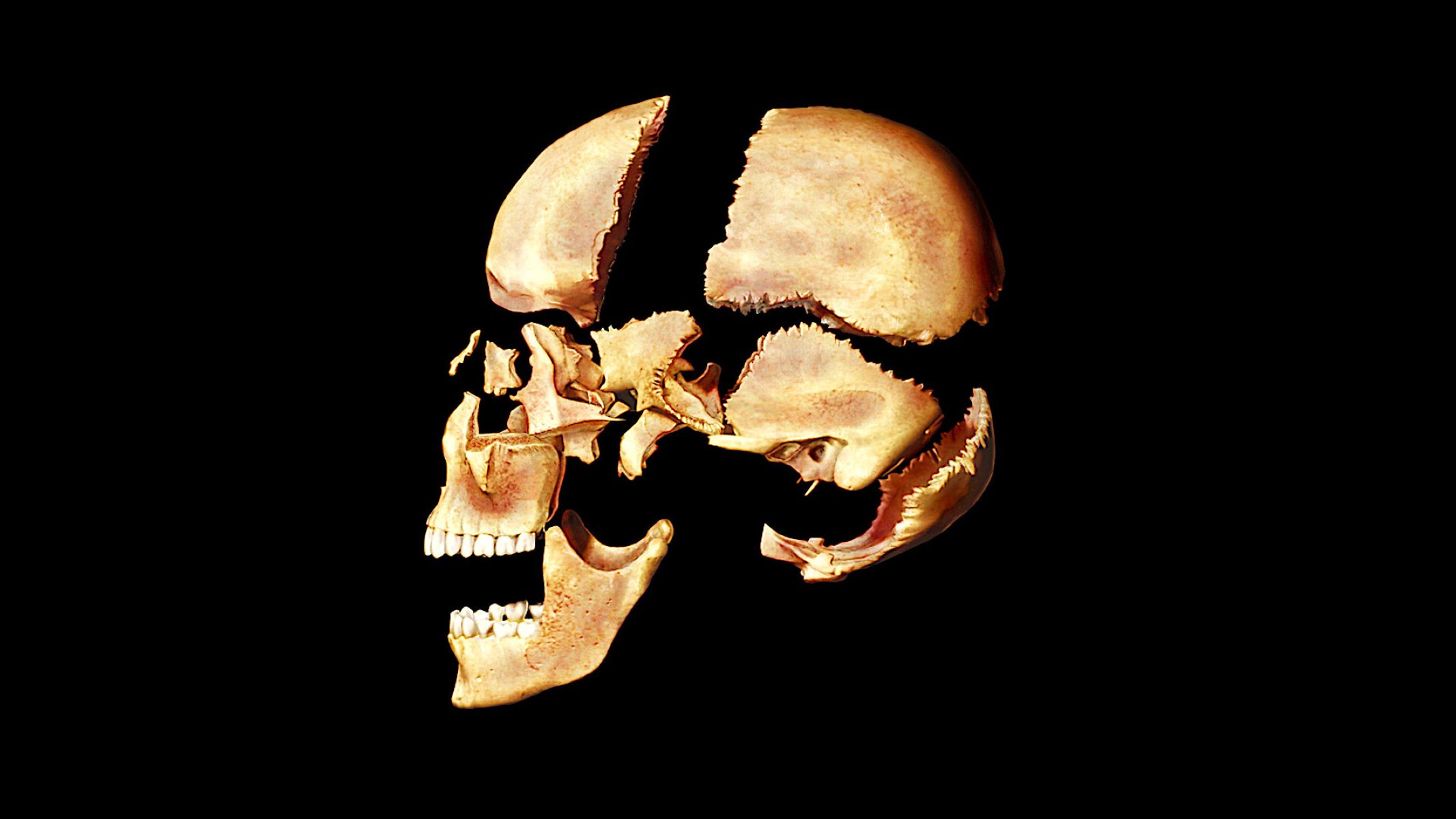
What is Morgagni-Stewart-Morel Syndrome? Morgagni-Stewart-Morel Syndrome (MSM) is a rare condition that primarily affects the skull, causing a thickening of the inner table of the frontal bone, known as hyperostosis frontalis interna (HFI). This syndrome, first described in 1719 by Giovanni Battista Morgagni, often presents with a mix of metabolic, endocrine, and neuropsychiatric symptoms. Common signs include headaches, hirsutism (excessive hair growth), menstrual disorders, obesity, and even cognitive impairments. Predominantly affecting women, MSM syndrome is believed to have links to long-term estrogen exposure, obesity, and genetic factors. Diagnosis can be challenging due to its varied symptoms, but imaging techniques like X-rays and MRIs are crucial for detection. Treatment focuses on managing individual symptoms, often requiring a multidisciplinary approach.
Key Takeaways:
- Morgagni-Stewart-Morel Syndrome involves thickening of the skull and is linked to headaches, obesity, and hormonal imbalances. It mainly affects women and can impact cognitive and neurological functions.
- MSM syndrome is a rare condition with diverse symptoms, including headaches, hirsutism, and depression. Understanding its genetic and diagnostic challenges is crucial for effective management.
What is Morgagni-Stewart-Morel Syndrome?
Morgagni-Stewart-Morel (MSM) syndrome is a rare condition involving the thickening of the inner table of the frontal bone, known as hyperostosis frontalis interna (HFI). This syndrome is linked to various metabolic, endocrine, and neuropsychiatric disorders. Let's dive into some key facts about this intriguing condition.
-
First Description: Giovanni Battista Morgagni, an Italian anatomist, first described MSM syndrome in 1719. He noticed the thickening of the inner table of the skull during an autopsy of an obese female patient with hirsutism.
-
Clinical Features: Common symptoms include headaches, hirsutism, menstrual disorders, galactorrhoea, obesity, diabetes mellitus, depression, irritability, fatigability, transitory hemiplegias, hearing impairment, cranial nerve palsies, muscle weakness, and seizures.
-
Hyperostosis Frontalis Interna (HFI): HFI is the primary radiological finding in MSM syndrome. It involves the thickening of the inner table of the frontal bone, detectable through X-ray, cranial computed tomography (CCT), or magnetic resonance imaging (MRI).
Metabolic and Endocrine Disorders
MSM syndrome often comes with a host of metabolic and endocrine issues. These can complicate the diagnosis and treatment of the condition.
-
Metabolic and Endocrine Disorders: Patients frequently exhibit obesity, diabetes mellitus, thyroid disease, and hyperparathyroidism.
-
Neuropsychiatric Symptoms: Depression, anxiety, confusion, cognitive disorders, and seizures are common neuropsychiatric symptoms associated with MSM syndrome.
-
Age of Onset: The mean age of onset is around 45 years, although it can occur at any age. Women are predominantly affected.
Genetic and Diagnostic Challenges
Understanding the genetic factors and diagnostic hurdles can help in managing MSM syndrome more effectively.
-
Genetic Transmission: The exact cause is unclear, but it is believed to be related to long-term estrogen exposure, obesity, high leptin levels, and genetics. Genetic transmission is thought to be autosomal dominant.
-
Symptoms and Signs: Symptoms vary widely but often include severe frontal headaches, dizziness, frontal lobe atrophy, decreased sense of sight and smell, parkinsonism, and anxiety.
-
Diagnostic Challenges: Diagnosing MSM syndrome is tough due to nonspecific symptoms. A thorough anamnesis, radiological imaging, and metabolic parameter testing are essential.
Radiological Findings and Treatment
Radiological findings are crucial for diagnosing MSM syndrome. Treatment mainly focuses on managing symptoms.
-
Radiological Findings: Bilateral thickening of the inner table of the frontal bone is typically detected using imaging techniques like CCT or MRI.
-
Treatment Approach: Treatment is generally symptomatic, focusing on managing metabolic, endocrine, and neuropsychiatric disorders. This includes weight-control medications, dietary changes, and lifestyle modifications.
-
Surgical Intervention: In some cases, surgery may be necessary to alleviate severe headaches or other symptoms. One patient’s headaches ceased immediately after surgical treatment.
Theories and Complications
Several theories attempt to explain the etiology of MSM syndrome. Complications can arise from the condition itself or its associated disorders.
-
Metabolic Craniopathy: MSM syndrome is also called metabolic craniopathy due to its wide range of symptoms and endocrine dysfunctions.
-
Estrogen Dysfunction Theory: One theory suggests long-term estrogen exposure may contribute to frontal bone thickening and associated symptoms.
-
Leptin Dysfunction Theory: Another theory posits that elevated leptin levels, often seen in obese individuals, may play a role in the syndrome’s pathogenesis.
-
Hyperparathyroidism: Some patients may exhibit hyperparathyroidism, complicating the metabolic profile and contributing to bone thickening.
Cognitive and Neurological Symptoms
Cognitive and neurological symptoms can significantly impact the quality of life for patients with MSM syndrome.
-
Cognitive Impairment: Thickening of the frontal bone can compress brain tissue, leading to cognitive impairment and other neurological symptoms.
-
Neurological Symptoms: Seizures, muscle weakness, and cranial nerve palsies are common and can significantly impact daily life.
-
Psychiatric Symptoms: Depression, anxiety, and confusion often correlate with the severity of HFI and cortical atrophy.
Obesity and Endocrine Symptoms
Obesity and endocrine symptoms are hallmark features of MSM syndrome, requiring careful management.
-
Obesity and Metabolic Disorders: Obesity is a hallmark feature, often accompanied by diabetes mellitus and thyroid disease. Weight management is crucial.
-
Hirsutism and Menstrual Disorders: Hirsutism and menstrual disorders are common in women with MSM syndrome, significantly impacting quality of life.
-
Galactorrhoea: Galactorrhoea, or spontaneous milk flow from the breast, can occur due to hormonal imbalances and is often associated with other endocrine disorders.
Headaches and Cortical Atrophy
Headaches and cortical atrophy are significant symptoms that can be debilitating for patients.
-
Headache and Dizziness: Severe frontal headaches and dizziness are frequent complaints. Effective management is essential for improving quality of life.
-
Cortical Atrophy: Thickening of the frontal bone can lead to cortical atrophy, associated with cognitive decline and other neurological symptoms. Imaging studies can detect this atrophy.
-
Rare Condition: MSM syndrome is rare, with its exact prevalence not well-documented. It predominantly affects women, and its incidence has increased over the centuries.
Final Thoughts on Morgagni Stewart Morel Syndrome
Morgagni Stewart Morel Syndrome, a rare condition, involves the thickening of the inner table of the frontal bone, known as hyperostosis frontalis interna (HFI). This syndrome often brings a mix of metabolic, endocrine, and neuropsychiatric disorders. Symptoms like headaches, hirsutism, obesity, and cognitive issues can make life challenging for those affected. Diagnosis isn't straightforward due to the nonspecific nature of symptoms, requiring thorough imaging and metabolic tests. Treatment focuses on managing symptoms through medications, lifestyle changes, and sometimes surgery. Understanding MSM syndrome is crucial for providing proper care and improving patients' quality of life. Ongoing research is needed to uncover more about its causes and develop better treatments. Despite its rarity, awareness and knowledge about MSM syndrome can make a significant difference for those living with this complex condition.
Frequently Asked Questions
Was this page helpful?
Our commitment to delivering trustworthy and engaging content is at the heart of what we do. Each fact on our site is contributed by real users like you, bringing a wealth of diverse insights and information. To ensure the highest standards of accuracy and reliability, our dedicated editors meticulously review each submission. This process guarantees that the facts we share are not only fascinating but also credible. Trust in our commitment to quality and authenticity as you explore and learn with us.


